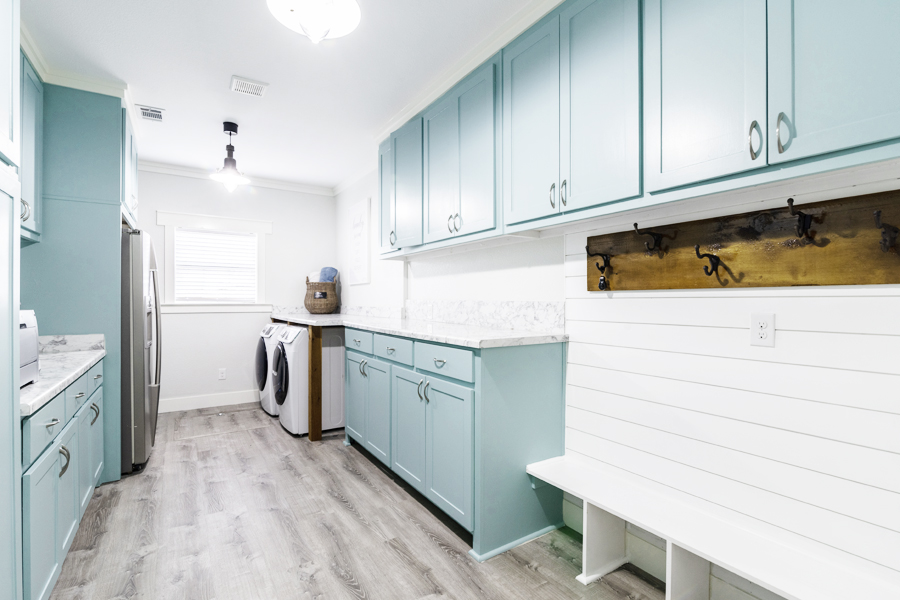Designing the perfect mudroom can be a similar undertaking to planning a kitchen remodel. Mudrooms need to be both practical and aesthetically pleasing. Traditionally, they serve as a transitionary space that keeps rain, snow, and mud outside of the main living space of your house. By keeping the dirt and grime sequestered into one room, you will save time and energy from mopping and sweeping the entire house from the outdoor elements.
Mudrooms are also seen as another great place for keeping outdoor gear and clothing. They can double as a secondary closet for coats, scarves, and gloves and can shift to summer gear like pool towels and floaties once the weather warms up.
Keep these in mind when planning your perfect mudroom:
1. Choose The Perfect Location
Depending on the size and space you have available, your mudroom can consist of an entire room or more of an area of another transition space. Because of this they are easy to add to your home by either an addition or conversion of an already build space. Mudrooms are most commonly located in an area that is useful and convenient. Some examples of locations are near the kitchen, off or in a section of the garage, or in a converted utility room. The biggest factor is this space needs to have direct access to the outside.
2. Install Durable Flooring
Your mudroom is going to have to withstand a lot of damp and dirty items. This makes choosing your flooring type critical. Install a moisture proof, easy to clean, and indestructible floor. Materials such as a non-slip tile or stone, vinyl, or concrete are all excellent choices. Once the main flooring material is laid, you can add natural fiber mats and boot scrapers near the entrance of your mudroom to help with the outdoor clean up. If you chose to go with a material such as concrete, adding a floor drain can make clean up even easier.
3. Add Custom Storage
As mentioned earlier, a mudroom can second as an outdoor closet. Planning for ample storage will make this possible. Install shelving that can withstand wire racks for quick drying wet items as well as adding numerous hooks and pegs for jackets, hats, umbrellas, and pet items. Create custom spaces for baskets such as trash bins, recycling, and dirty laundry that will make professional organizers jealous.
4. Create Seating
Sometimes overlooked, there should always be somewhere to sit in a well-designed mudroom. These seating options are convenient when removing or putting on shoes or boots and can also second as somewhere to put something down when your hands are full. Adding benches that double as storage compartments are also a great idea.
5. Laundry
If you are choosing to convert your utility room into your mudroom, chances are your washer and dryer will already be installed in the space. However, if you are designing from scratch, utilizing your mudroom as a place for your laundry is also an excellent choice. Having your washer, dryer, laundry sink in your mudroom will make washing dirty clothes a breeze and will eliminate your need to transfer soiled clothes through the main portion of your home.
No matter the climate your live in, having a mudroom in your home is beneficial. This transitionary space can free up storage in your home, add a new level of organization, and cut down on cleaning.






